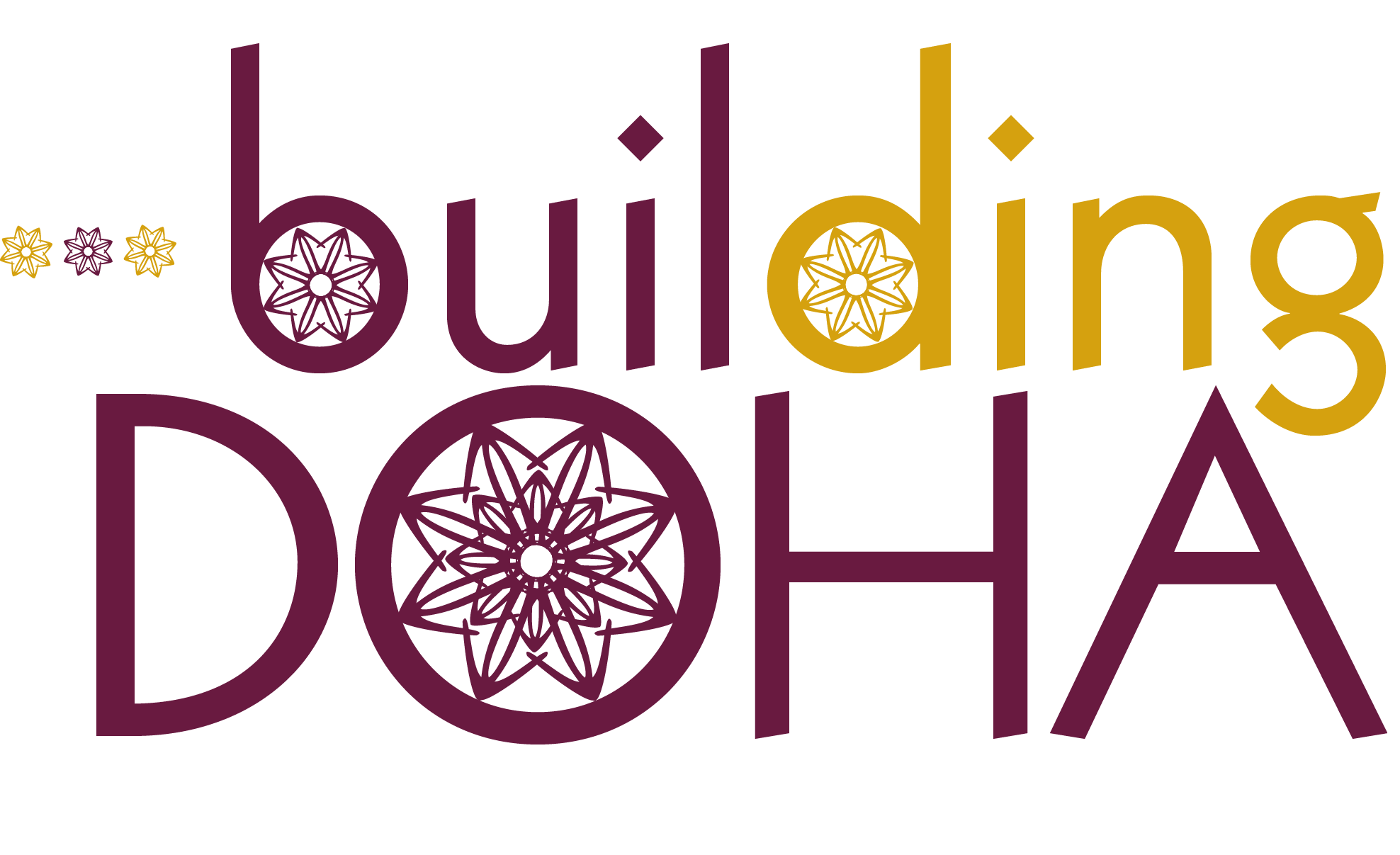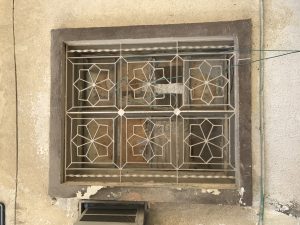Influenced by different international styles, Qataris are searching for their own architectural identity.
By: Nayla Al-Naimi
With a page torn out of an architectural magazine in one hand, and a picture of a neighbor’s house in the other, Noora Al-Naemi, 35, walked into her architect’s office, wishing to replicate these images into her dream house.
“I’ve never built a house before, so I collect things I like and ask my architect to make it happen,” said Al-Naemi, a Qatari local who is currently designing her house.
Lack of identity
Al-Naemi’s way of going about designing her house is not uncommon among the Qatari community.
Driving through the streets of Doha, one might wonder what the story is behind all the beige boxed villas that line the streets. Distorted between what seems like a traditional design with modernized elements from all around the world thrown in, experts say Qatari architecture has yet to find its identity.
“I had so many clients who don’t have any idea about architectural design. When it comes to their innovation and design, you find a strange mixture. They just find photos from the internet; they want that window, that door,” said Mishaal Al-Shamari, director of the Green Building Council, an organization that finds environmentally sustainable solutions for design and development. “The house doesn’t have a real identity. You don’t know whether its modern, traditional, Italian or Mediterranean,” he said.
Al-Shamari said this is because Qataris tend to be easily influenced by what is around them, especially when it comes to trends that don’t always make sense. “A few years back, there was a very famous (Turkish) show called ‘Hareem Al Sultan’, and at that time, I had friends who tried copying the design. People went from classic to wanting a room like Sultana Hyam with an Ottoman style,” he said.
Moza bint Rashid, 45, a Qatari local who designed her own house a few years ago, shares Al-Shamari’s concern that Qataris lack an eye for architectural design. “The exterior of my house is very modern – clean cut. My pool house, on the other hand, has a Moroccan-style exterior because I was very interested in it at the time,” Rashid said. “It doesn’t flow at all and I wish I hadn’t done it.”
Education
Despite the risk of investing millions of riyals in a temporary architectural fad, Al-Shamari said trends are important as long as they are used in the right way and in a timely matter, but that is not happening in Doha. “Amazing and creative ideas are coming up, especially in North and South America, in Europe. [But] here, most people still ask for their houses to look like the houses that were built 20, 30 years back, because they were younger and impressed with that design. So in their mind, it is their dream house,” Al-Shamari said. As a result, many Qatari houses look uniform and innovations are rare.
According to Al-Shamari and Al-Naemi, Qataris need to become more educated about architectural design, especially if they are investing so much into these projects. Sheik Soud Al Thani, head of sustainability at ASTAD, a project management consultancy in Qatar, says part of that knowledge should come from the architects, who should pass it down to their clients. “Rarely do you find architects guiding their clients to the best design, they just let them do whatever they want to do,” Al Thani said. “They should teach them.”
A social stigma
Many Qatari residents have picked up on the aesthetic similarities among private residential villas. “All the houses are almost exactly the same. Same engraving, arches, gates, the color,” said Ahmed Abdulmajeed, 22, an expatriate in Qatar. Al Thani concurred, adding that it is a social stigma to be different in a country like Qatar. “I remember a man who insisted to put something different in his house, in the front that faced the street, and people thought it was weird. They didn’t think his house was beautiful,” Al Thani said.
According to Al Thani, Qataris do appreciate unique designs, but from afar, in public places like Souq Waqif and Katara. They rarely bring these designs into their homes. “The most important thing to them is for the design to be socially acceptable. It’s not just a traditional design – just a design they can show off to their family and friends. If the person went off to do something different, people will not be for it,” he said.
He added that one unfortunate habit many architects here in Qatar have picked up on is recycling the same building designs for each of their private clients. “I know one architect who copies and pastes his designs for the whole area and everybody is okay with that,” Al Thani said. He added that he disapproves of this practice and emphasized that creativity should be encouraged by both the public and private sector.
Being creative with the exterior of the house is not on top of locals’ list of priorities. Both Al-Naemi and Rashid admitted to not caring much about the exterior as they do about the interior of the house. “Qataris can be very extreme with their taste. Either people show off in every way they can with the exterior so the public can see it, or they, like me, wouldn’t mind living in a plain squared box to spend more on the interior,” Al-Naemi said.
Areas in Qatar fall into two categories: “There are the areas of squared cemented houses that are very compound-like style, and there are areas of houses that are filled with exterior design,” Rashid said. Al Thani said those living in these squared cemented houses are a part of the old culture, who are not used to paying for unique exterior flourishes. “This is why when you go to the Al Gharafa or Dafna, the designs differ from house to house with different details. The reason is because people in that area have the money and knowledge to invest in the design stage,” Al Thani said.
Western influence
Ironically though, Qataris left their spacious courtyard houses for squared cemented villas in order to demonstrate their new-found wealth.
In the early 20th century, traditional Qatari houses were arranged around a central courtyard, surrounded by rooms, the Majlis and the bathroom. In addition to providing privacy, Al-Shamari said the courtyard was also used to circulate cool air in and out of the building. But when foreigners began moving to the country, this structure was soon replaced with tightly packed blocks of houses that expanded vertically as opposed to horizontally.
“When the Americans came to our country, they built their own compounds and villas, so we started basing our structure on theirs,” Al-Shamari said.
According to Al Thani, these compounds were built around the 1960s when Qatar and the British Embassy were also discussing creating a ‘masterplan’ for Doha. The plan was later implemented in 1975 by William Pereira, an American architect, who also built Doha’s Sheraton Hotel. According to Al Thani, Pereira mapped out the locations of the embassies and the Dafna towers.
“His [Pereira] plan was extremely influenced by the American culture,” Al Thani said.
This masterplan was the start of Doha’s modern architecture period and the end of the prevalence and dominance of traditional courtyard houses. “Now, we say that we appreciate our traditional design, but back then, that wasn’t the attitude,” Al-Shamari said.
Al-Naemi said Qataris will always hold the attitude of wanting something they don’t have. “The mentality was, and still is today, that something foreign is more likely to be better,” she said. “We have the luxury to pick and choose what we want, and sometimes I think we’re blindly picking anything that comes our way without taking time to choose what really works for us.”
According to Al-Shamari, there is still time to salvage the traditional designs of the past. “At the time, we didn’t have Qatari engineers, so people who can keep those cultural concepts were not there. But now we do,” Al-Shamari said. He added it is important today more than ever before to preserve these concepts because Qataris finally have the resources and the initiative to do so.
Arabian influence
Though much attention has been paid to Western influence on architecture in Doha, other Middle Eastern countries have also influenced the design of Qatari houses.
“If you think about the people that came into the region at the time, there were many Iranians, Egyptians, Palestinians and Lebanese,” Al-Shamari said. “They all influenced the minor designs of our houses,” he said.
Foreign Arabs accessorized the traditional Qatari house in every way they knew how. Plain old walls, windows and doors became canvases filled with traditional geometric patterns.
“The decorative naqsh [engraving] of the walls, the pillars, the inverted V and semi-circle headed arches, the metal gates – these designs were all brought in from all around the Middle East, and I think it’s beautiful,” Rashid said.
Al-Naemi agreed there is nothing wrong with building a house inspired by designs gathered from around the world.
“The multicultural designs gathered in one Qatari home, it is a beautiful representation of Qatar,” she said.






